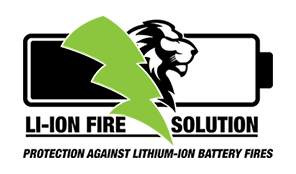
Lithium-ion batteries are becoming more and more common in a lot of the devices and appliances that we use in our day-to-day lives. These kinds of batteries offer a high energy density, longevity, ability to be recharged many times, overall safety, and sustainability, making them a popular choice in a range of devices – from phones, tablets, laptops, computers, power banks, and chargers to toys, power tools, electric toothbrushes, vaping devices, and electric bikes and scooters.
However, what a lot of people do not realise is that they are also very flammable. If lithium-ion batteries are crushed, punctured, or damaged, they can catch fire or explode, which can cause property damage, injury, or even death. Not realising this, many people continue to throw these devices and batteries out with their general waste.
The risk of fire associated with lithium-ion batteries is something that high rise building and strata owners should be vigilant about, given that these batteries may cause property damage and fires if they are improperly disposed of in rubbish chutes and communal waste disposal areas. They can also result in fire and explosion if they are misused within individual residences – for example, if they are used when broken or damaged, or are allowed to overheat, both of which can increase the risk of fire or explosion.
Fire risks associated with e-bikes and e-scooters in densely populated areas, such as apartments, is significant, with some alarming statistics emerging. Often, users modify battery construction or use non-OEM chargers, which greatly increases the fire risk. In response, some Strata-Management companies are prohibiting residents from storing or charging e-bikes and e-scooters within apartments due to this heightened risk. Additionally, immediate consideration is needed for installing electric vehicle charging stations in underground carparks. Although the likelihood of a fire is low, if one occurs, it could be catastrophic and cause extensive damage to the building.
For these reasons, high rise and strata owners need to be prepared to fight and respond to lithium-ion battery fires in the event that one occurs. Given how challenging lithium-ion battery fires can be to fight, as they do not always respond effectively to traditional fire extinguishers and firefighting agents, it is advisable that high rise building and strata owners invest in specialised fire extinguishers. Li-Ion Fire’s F-500 EA range and other specialised extinguishers designed for fighting lithium-ion battery fires have been proven to be safe and effective in putting out these kinds of fires.
With next-generation encapsulator technology and a non-corrosive multipurpose formula, Li-Ion Fire’s F-500 EA extinguisher range is an effective solution for cooling, controlling, and extinguishing lithium-ion battery fires. Find out more about how our extinguishers work and what makes Li-Ion Fire’s F-500 EA range special here Protection Against Lithium-Ion Battery Fires (lithium-ionfireprotection.com.au)
Our F-500 EA range comes in both Portable Fire Extinguishers and Mobile Extinguishers.
We also offer a range of other solutions to assist strata and high rise building owners to mitigate and respond to lithium-ion battery fires. Some of the solutions we offer include fire blankets, hose induction systems, and CCTV fire detection cameras.
Our CCTV fire detection cameras use advanced imaging and infrared spectrum technology to ensure early fire detection and reliable monitoring. They can detect fires within seconds and will send real-time alerts, allowing you to respond quickly in the event of a fire. Our CCTV fire detection cameras use AI technology to enhance accuracy by up to 99% and reduces false alarms. The installation of specialised fire detection cameras is recommended to ensure early detection in high-risk areas like high rise and strata buildings.
Our lay flat hose induction systems can be used to upgrade your existing hydrant system, taking them from being limited to Class A fires to allowing them to efficiently handle multiple fire classes, including Class A, B, D, F, and lithium-ion battery fires. This setup can be installed as a permanent fixed system near a hydrant valve or used as a mobile kit that can be carried to any landing valve. We also offer a 25mm Hose Reel Induction System ,which can be used to upgrade an existing 19mm or 25mm hose reel system to make it suitable for handling multiple fire classes, including Class A, B, F, and lithium-ion battery fires. Since 19mm hose reels are the most common type used in Australia, the 25mm induction system will usually require the installation of a new cabinet and built-in induction system.
